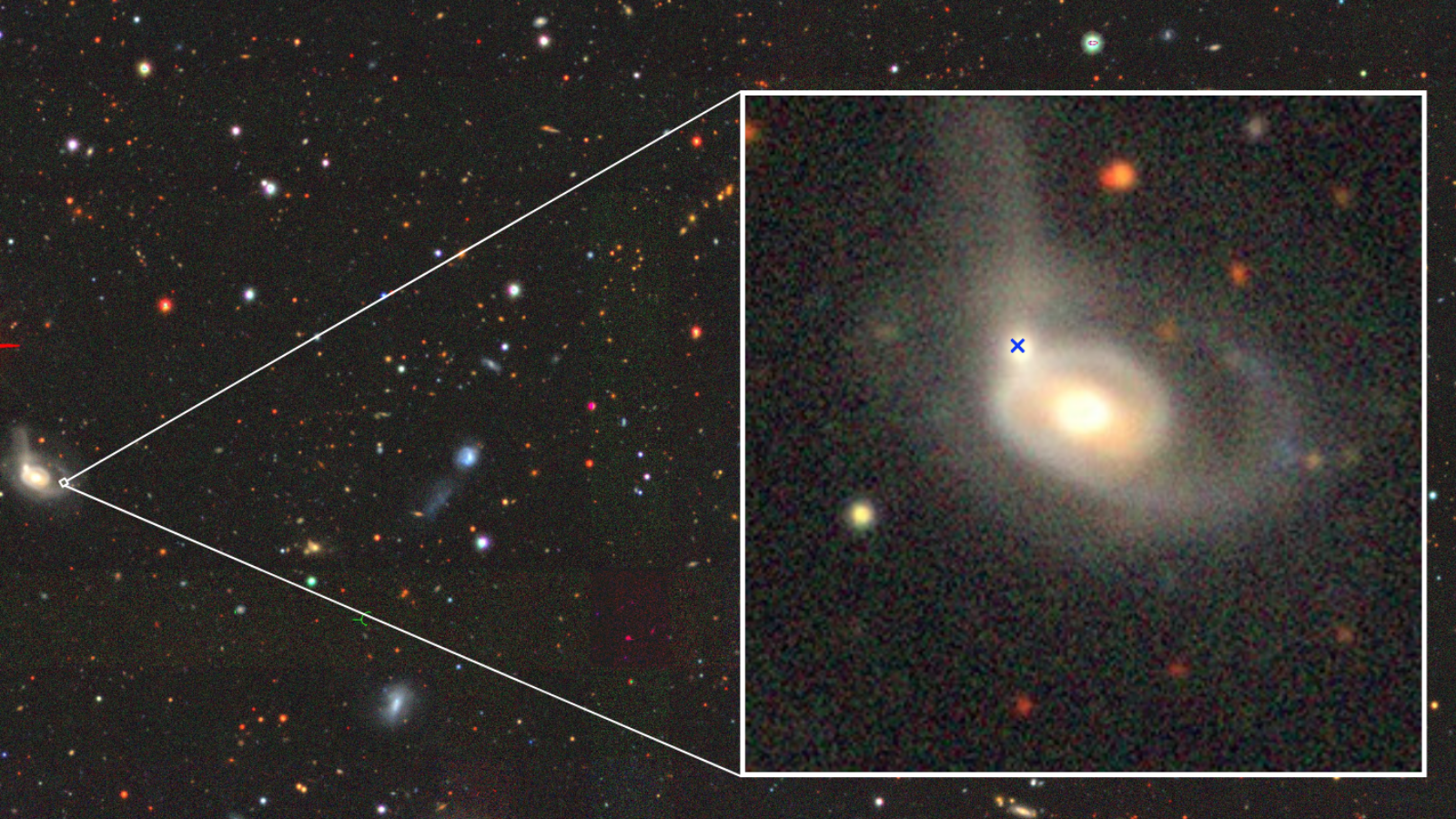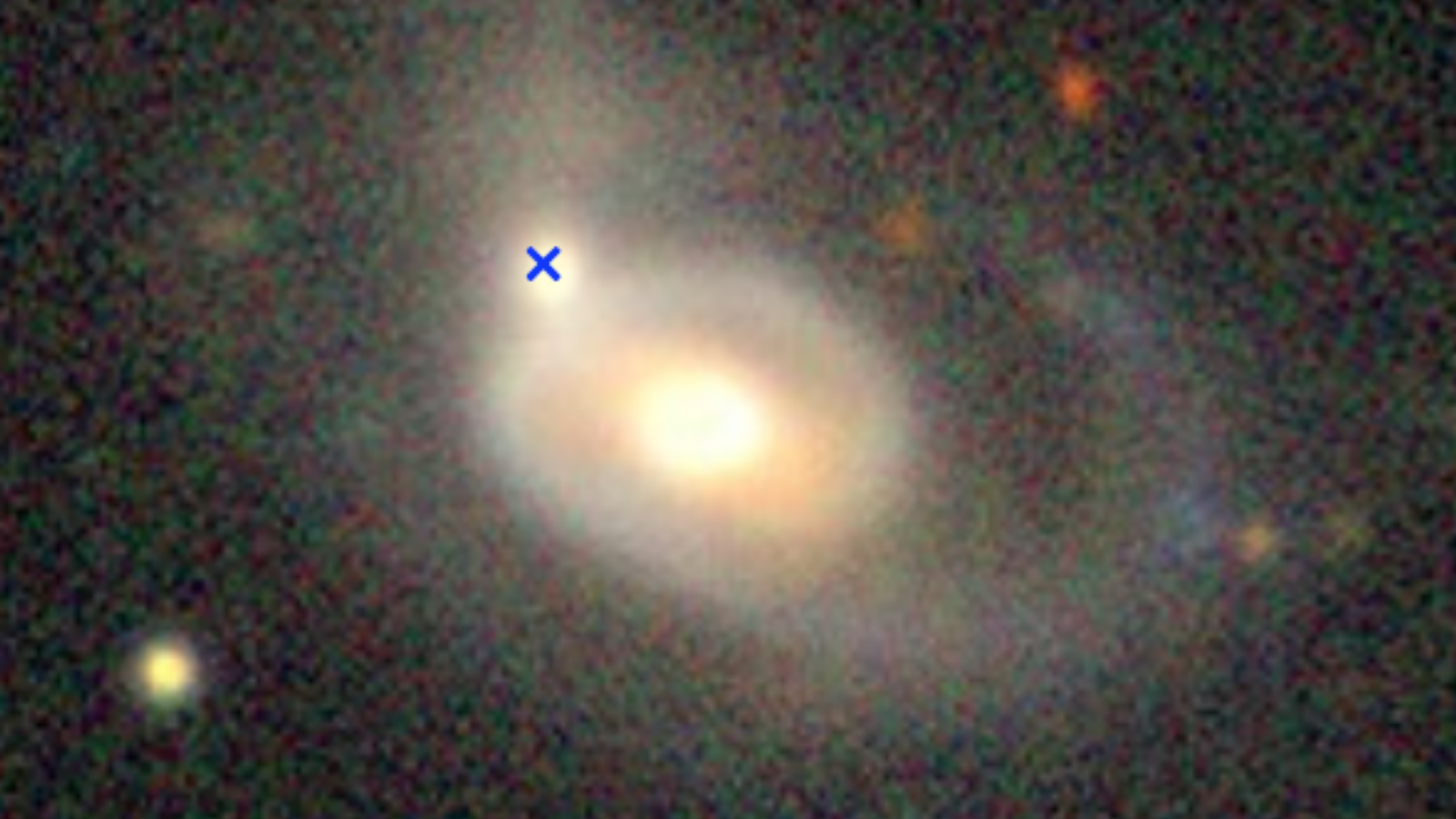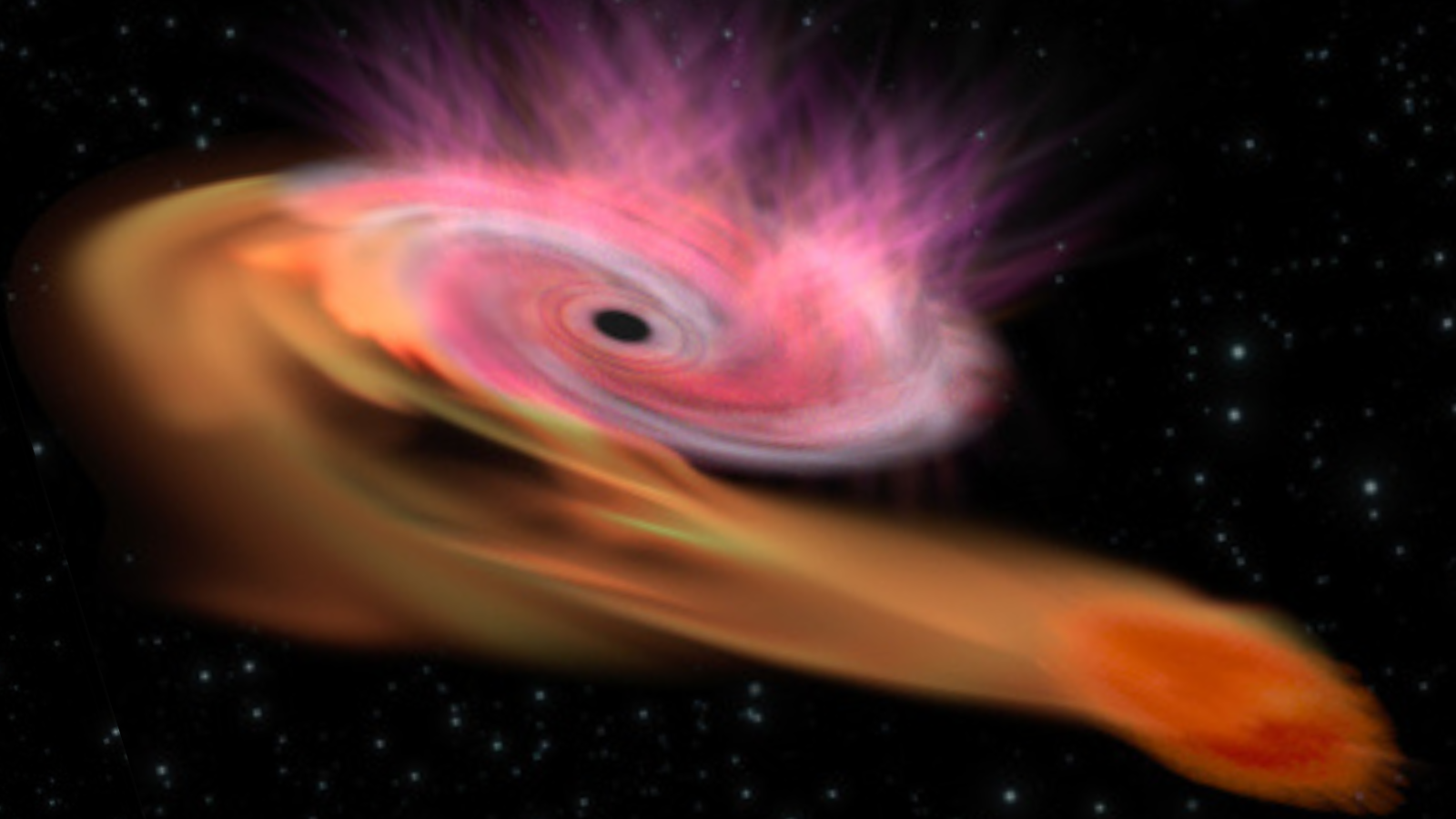Astronomers discover black hole ripping a star apart inside a galactic collision. 'It is a peculiar event'
From :- Space.Com
By :- By Robert Lea
Edited by :- Amal Udawatta

Astronomers have taken a detailed look at a rare and incredibly violent cosmic event resulting from an unfortunate star venturing too close to a supermassive black hole. The team behind the research hopes it could reveal more about how such events, dubbed "tidal disruption events" or "TDEs," influence the evolution of their host galaxies.
These brutal battles between stellar bodies and the immense gravity of black holes with masses millions or even billions of times that of the sun result in stars being shredded and fed to the black holes. This cosmic cannibalism causes blasts of light that can outshine the combined light of every star in the host galaxy of the TDE, alerting scientists to a gory stellar death.
This particular TDE has been designated AT 2022wtn, and occurred in a galaxy located around 700 million light-years away. This galaxy is in the early stages of merging with one of its galactic neighbors.
It is thought that the two galaxies in this merging system have already made a close pass to one other
This represents just the second time that a TDE has been detected in interacting galaxies. That's despite a prevailing theory that the early stages of mergers create the kind of conditions that favor these brutal occurrences.
How a star became stellar spaghetti
AT 2022wtn was first brought to the attention of astronomers at the Zwicky Transient Facility (ZTF), with further investigation in wavelengths of light ranging from radio to infrared and even X-rays, which revealed its nature as a TDE. The astronomers were able to determine that the black hole involved in this TDE has a mass equal to around 1 million suns, while its stellar meal is a low-mass star.
However, despite clearly presenting itself as an example of a supermassive black hole ripping apart a star, there are some unusual aspects of AT 2022wtn that set it apart from other TDEs.
"It is a peculiar event. Its light curve is characterized by a plateau in the phase of maximum brightness, lasting about 30 days, accompanied by a sharp drop in temperature and a spectral sequence that shows the development of two emission lines corresponding to the wavelengths of helium and nitrogen," team leader and National Institute for Astrophysics (INAF) Francesca Onori said in a statement. "Something that we had never observed with such clarity."

Like all TDEs, AT 2022wtn would have begun when a doomed star's orbit brought it too close to the central supermassive black hole at the heart of its host galaxy.
This results in the immense gravitational influence of the black hole generating immense tidal forces within the star. These forces squash the star horizontally while stretching it vertically, a process colorfully known as "spaghettification."
Some of the resulting stellar wreckage winds around the destructive supermassive black hole like actual spaghetti around a fork, forming a whirling flattened cloud of plasma called an accretion disk.

Not all of the material from the wrecked star falls around the black hole and eventually into its maw, however. A great deal of stellar matter is blasted out as powerful, high-speed outflows or jets.
In the case of AT 2022wtn, these outflows created a short, bright radio emission from the TDE and extreme changes in the velocity of light-emitting elements around the event.
This also indicated that the star was completely destroyed as a result of this TDE and that, in addition to an accretion disk, the cosmic cannibalistic event created an expanding spherical "bubble" of expelled gas.
"We found clear traces of the dynamics of the surrounding material also in some emission lines which show characteristics compatible with a fast propagation towards the outside," Onori said. "Thanks to our monitoring campaign, we were able to propose an interpretation of the origin of the observed radiation: AT2022wtn gave rise to a rapid formation of the disk around the black hole and the subsequent expulsion of part of the stellar matter.
"This result is particularly relevant, since the source of visible light and the physical conditions of the region from which it comes, in TDEs, are still under study."
The team's research was published on May 23 in the journal Monthly Notices of the Royal Astronomical Society.
- Get link
- X
- Other Apps
Labels
Astronomy- Get link
- X
- Other Apps
Comments
Post a Comment